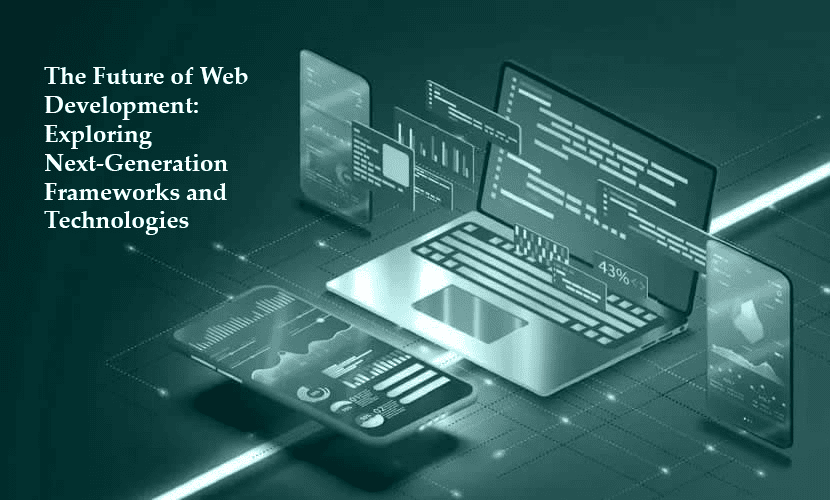
The web has transformed significantly in the last decade, from static HTML pages to capable, powerful apps for business – such as those that serve millions of users. As technology evolves and user expectations increase, developers are burdened with a new set of concerns to consider: how to deliver faster, more secure, and more engaging digital experiences.
In this post, we’ll look at the future of web development, next-generation frameworks and technologies that are changing it, and how businesses (including eCommerce platforms such as PrestaShop) use modern tools like the Quotation module PrestaShop to remain competitive in the digital age.
The Evolution of Web Development
To predict the direction of web development, it’s important to compare it to where it was.
The early 2000s were a pretty easy time to be a web developer — static HTML, rudimentary CSS, and some light interactivity with JavaScript. And then the Web 2.0 revolution arrived, and dynamic content, social media, and user-generated data began transforming how websites functioned.
Now we’ve entered what’s known as Web 3.0, defined by:
- Artificial intelligence and machine learning integration
- Real-time interactivity and personalization
- Cloud-native applications
- Decentralized technologies like blockchain
And those advances are not merely raising the bar for websites; they are also upending how businesses communicate with customers and how developers create and deploy apps.
Rise of Newgen Web frameworks
Modern-day web development is predominantly WordPress and React-based as it simplifies tedious coding and enhances power, speed, scalability, and flexibility. Here, we’ll take a look at some of the most disruptive frameworks and technologies that are influencing the future.
a. React and Next.js
Facebook’s React is one of the most popular front-end frameworks in use today. Its Composable Components model lets you develop composable, reusable, and interactive UI elements in no time.
Next. js, it is neck and neck with React itself — while React feeds the virtual DOM that leads to browser-side rendering, Next.js is doing something similar but taking things further: server-side rendering (SSR), static site generation (SSG), and API routes all boost your SEO performance and help pages load faster.
For businesses, this equates to faster websites, better experiences for users and higher conversions.
b. Vue.js and Nuxt.js
Vue.js has become popular because of its lightness with powerful features. It’s perfect for startups and growing companies that need a lightweight, responsive, and quick platform to power their front-end.
Nuxt. JS, much like Next. JS, adds more flair to the arsenal by allowing for SSR & pre-rendering with speed and SEO enhancements.
c. Angular and the Ascension of Typescript
Google’s Angular is a powerful framework that can pretty much do anything you would need to within an enterprise application. It takes advantage of TypeScript, which provides type safety, better debugging, and a structured codebase — three things essential for large-scale projects.
With all other businesses looking for more complex and scalable web apps, Angular continues to be a star choice.
d. Svelte and SolidJS: the new wave
At the top, React, Vue, and Angular — but exciting new ones like Svelte and SolidJS expand what’s possible.
Svelte moves the work to the build step, leading to more efficient (read smaller and faster) applications. Developers adore it for its simplicity and astounding performance.
These frameworks are the next-generation thinking — faster builds, smaller bundles, better developer experiences.
The Position of AI and Automation in Web Development
Artificial intelligence (AI) and automation are among the most influential upcoming web development trends.
AI is now being used for:
- Code generation and Programming by example (e.g., GitHub Copilot, ChatGPT Code Interpreter)
- User behavior prediction and personalization
- Chatbots and conversational interfaces
- SEO optimization and content automation
For example, you can use AI to predict future client behavior in an online store developed on the PrestaShop platform, offer a product recommendation, or play with the price of goods in automatic mode.
Similarly, automation tools for CI/CD pipelines (and even testing) help developers avoid human errors and speed up project iterations.
Rise of Web3 and Decentralized Applications
Web3 is often connected to cryptocurrencies, but it signifies even more — a decentralized iteration of the web, enabled by blockchain.
Here is what Web3 means in the web development world:
- Enhanced data security and transparency
- User ownership of digital assets
- Smart contracts for automation
Tools such as Hardhat, Truffle, and web3. js is enabling developers to create dApps that run without intermediaries.
Similarly, as companies all around the world continue to investigate the use of blockchain in ecommerce or tokenized loyalty programmes, Web3 developers will be hot property.
Progressive Web Apps: The Future of UX
With mobile traffic ruling the web, Progressive Web Apps (PWAs) have become a bit of a hybrid solution that takes some of the best features from your web and mobile apps.
PWAs are:
- Fast (loads instantly. Instant loading even with a poor network)
- Installable (add to homescreen)
- Offline-capable (via service workers)
If you operate an eCommerce website powered by PrestaShop, then you should consider adding a Progressive Web App to boost your conversions and retention rate. It is a way for customers to experience an app-like experience without downloading a native app.
Many modern frameworks like Next. js, Angular, and Vue. js now natively provides straightforward ways to build a PWA.
Cloud-Native and Serverless Architectures
As we need to scale further and further, cloud native and serverless web development are becoming increasingly popular.
Instead of dealing with physical servers, developers now fire off applications on services such as AWS Lambda, Google Cloud Functions, or Vercel. These architectures provide:
- Auto-scaling based on demand
- Reduced operational costs
- Simplified deployment
Developers can focus on coding, not infrastructure — and for businesses, that equates to faster go-to-market times and fewer maintenance headaches.
How APIs and headless CMS are changing the web landscape today
APIs (Application Programming Interfaces) are the lifeblood of today’s web. They piece together certain services — whether payment gateways or CRMs — into a seamless whole.
The advent of headless CMSs (such as Strapi, Contentful, or Sanity) has shifted how developers handle content. Rather than locking you into a platform, headless CMS allows you to share your content anywhere (on websites, in apps or even on IoT devices) via APIs.
For instance, a PrestaShop store can combine with several systems via APIs – starting from marketing automation tools and up to inventory management or personal modules (because a Request for Quote module, PrestaShop is also a custom one).
This flexibility enables you to include features such as custom price quotes, automated order processing, and dynamic product generation on your website — all alongside running a high-performance site that scales.
Low-Code and No-Code Development Platforms
The low-code/no-code revolution is enabling non-developers to create websites and applications without any coding skills.
Platforms such as Bubble, Webflow, and Wix Velo are allowing entrepreneurs to design, test and launch viable applications at high speed.
These tools aren’t a substitute for professional developers, but they’re accelerating innovation and lowering the cost of digital transformation. Today, developers are optimizing for more advanced customizations and focusing on API integrations and optimization of the performance, allowing clients themselves to deal with design and content.
What Web Development Will Look Like in the Next Decade -Cybersecurity
And now that websites are more complex, cybersecurity becomes paramount. Secure web applications of the future need to be designed with security in mind, building defences from the outset.
Some of the key trends in web security are;
- Non-trusting system(never trust, always verify)
- AI-based threat detection
- Biometric authentication
- End-to-end encryption
Especially in eCommerce (PrestaShop is a web platform designed for sales), those modules and extensions need to be extra secure.
For example, if you’re using the Quotation module of PrestaShop it will be crucial to secure sharing data between customer and store owner, to build trust and stay compliant with privacy laws.
Augmented Reality and Virtual Reality (AR/VR) Integration
One other area that looks interesting in the future of web development is immersive tech — namely, AR (augmented reality) and VR (virtual reality).
In fact, companies like IKEA and Nike have already started using AR applications to visualize products from their catalogue by enabling users to preview products inside real-world environments before buying.
Browser APIs keep getting better, which will lead to more websites supporting AR/VR experiences on the web instead of becoming dependent on apps. Frameworks like A-Frame and Three. JS is giving us that future.
Think about a PrestaShop store where your visitors can view the products from all angles, and also see how they work on their own browser at home, or even quote them through the module Quotation for PrestaShop when you want to acquire in bulk.
Performance and Accessibility Both Becoming Big Issues
The contemporary web is about not only features — speed and inclusivity count as well.
Google’s Core Web Vitals update is focusing on the load time of a page, interactivity, and visual stability. Everything is optimized – from the script to lines of code.
Just as important is web accessibility, which ensures that websites are usable by everyone, even people with disabilities. Developers can also use tools such as axe DevTools and Lighthouse to audit and optimise for accessibility scores.
The Future Developer’s Toolkit
Besides, Tomorrow’s developers will require a more diverse skillset — combining traditional coding abilities with skills focused on emerging technologies.
Key areas to master include:
- JavaScript frameworks (React, Vue, Svelte)
- TypeScript for large-scale projects
- AI-powered coding assistants
- API-first and serverless architectures
- Security-first development
- Headless eCommerce and CMS integrations
The developers who will thrive in the changing world of digital are those who can automate, learn all the time, and quickly adapt to new frameworks.
Conclusion: Building for the Future
The future of web programming is bright, fast-changing, and exciting. AI-powered automation, immersive AR experiences, and decentralized ecosystems; everything is pushing towards a smarter, faster, more personalized web.
For companies of all kinds (including online retailers that operate through platforms like PrestaShop), the choice to keep up with current frameworks and tech is not so much a question as it is a necessity. The likes of the ‘Quotation’ module for PrestaShop are an example to us all that tech can make life easier, take a lot of work off our hands, and keep enterprises out front in a tight market.
One thing is for sure: the web will evolve, and each of us who innovates will play a role in shaping its future.






